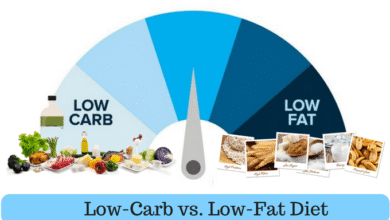
Blood sugar control is one of the most pressing health challenges of our time. Across Africa, Europe, and beyond, millions are living with diabetes or prediabetes, while countless others battle the daily roller coaster of energy crashes, sugar cravings, and fatigue. In Africa alone, the International Diabetes Federation reports alarming increases, with urbanization and diet shifts driving more cases each year. Europe faces its own crisis, with aging populations and lifestyle diseases fueling the rise. But here’s the thing—while medication is crucial for many, food remains the first line of defense. Think of it this way: your diet is like the steering wheel of your health. Turn it the wrong way, and you head toward complications. Guide it wisely, and you stabilize, even thrive.
This is where the power of food to lower blood sugar becomes undeniable. Nutrition experts often debate which food deserves the crown, but research points strongly in one direction: lentils. These small but mighty legumes have been nourishing cultures for centuries, from spicy African stews to hearty European casseroles. Packed with fiber, plant-based protein, and minerals that support insulin function, lentils stand out as the number one food to lower blood sugar. In this article, we’ll unpack why lentils deserve this reputation, how they work in your body, how you can use them daily, and why they’re not just healthy but also affordable and accessible. Ready to discover how this simple food could be your blood sugar game-changer? Let’s dive in.
Why Controlling Blood Sugar Matters for Everyone
When most people hear “blood sugar,” they think only of diabetes. But here’s the reality: blood sugar stability matters for everyone—whether you’re managing diabetes, trying to lose weight, or simply aiming for better daily energy. Think of your blood sugar like the fuel gauge in your car. If it spikes too high, you burn out quickly. If it dips too low, you stall and feel sluggish. Maintaining that middle ground keeps your “engine” running smoothly.
For people living in cities like Lagos or Johannesburg, where high-carb meals are common, sudden spikes are almost unavoidable. Likewise, in European cities where pastries, breads, and processed snacks dominate diets, post-meal crashes leave many reaching for more caffeine or sugar. Over time, these fluctuations don’t just cause short-term irritability—they wear down your body’s ability to regulate itself. This increases the risk of insulin resistance, type 2 diabetes, and even cardiovascular disease.
Stable blood sugar supports focus, mood, and long-term health. It prevents the “crash” that leads you to grab unhealthy snacks and helps maintain a healthy weight. For anyone who wants to feel energized throughout the day, understanding the role of food to lower blood sugar is critical. And among all the foods available, lentils provide a remarkable solution: they release energy slowly, steadying your levels like a perfectly tuned thermostat.
The Science Behind Lentils and Blood Sugar
So, why lentils? The answer lies in their unique nutritional makeup. Lentils are rich in soluble fiber, which works like a natural traffic controller in your digestive system. When you eat foods high in soluble fiber, your stomach empties more slowly, and glucose trickles into your bloodstream instead of flooding it. This keeps your blood sugar curve smooth, avoiding the roller coaster effect that white bread, sugary drinks, or processed snacks can trigger.
But fiber isn’t the only star. Lentils are also a powerhouse of plant-based protein, making them doubly effective. Protein takes longer to digest, adds to feelings of fullness, and helps prevent overeating. When combined, fiber and protein in lentils create a slow-digesting meal that leaves you satisfied while supporting healthy blood sugar. Research in The Journal of Nutrition showed that swapping out starchy foods like rice or potatoes for lentils significantly reduces post-meal glucose spikes. That’s like choosing a calm, steady river over a wild flood.
What makes lentils even more fascinating is their glycemic index (GI). With a GI score ranging from 21 to 29 (depending on variety), lentils are among the lowest GI carbohydrate sources available. Compare that to white rice (70+) or white bread (75+), and you’ll see why lentils are so effective. They release energy at a controlled pace, offering your body a more predictable, stable response. In short, lentils don’t just feed you—they regulate you.
Nutritional Profile of Lentils: A Superfood Breakdown
When we call lentils a “superfood,” we’re not exaggerating. One cup (about 200 grams cooked) offers a nutrition profile that puts many trendy foods to shame. Let’s break it down:
- Fiber (15g): Enough to support digestive health and slow glucose absorption.
- Protein (18g): Plant-based and complete when paired with grains, helping build muscle while stabilizing sugar.
- Carbohydrates (40g): Low GI, meaning they digest slowly without sugar spikes.
- Iron (6.6mg): Supports oxygen transport in the blood—crucial for energy.
- Magnesium (71mg): Improves insulin sensitivity, allowing cells to process glucose more effectively.
- Folate (358mcg): Essential for metabolism and cell repair.
These nutrients aren’t just numbers—they’re powerful allies for your health. Fiber and protein control sugar release, magnesium fine-tunes insulin, and iron prevents fatigue. Together, they create a nutritional symphony that supports both immediate energy needs and long-term metabolic health. Compare that with common carb staples like pasta or potatoes, which often spike sugar and offer fewer nutrients. Lentils are like getting the full meal package in one bowl.
Lentils vs Other Blood Sugar-Friendly Foods
You might be wondering: are lentils really better than oats, quinoa, or leafy greens? Each of those foods has benefits, but lentils bring a balance that’s hard to beat. For instance, oats are great for fiber but lower in protein. Quinoa has protein but a higher glycemic index. Leafy greens are nutrient-dense but not filling enough to serve as a main carbohydrate source. Nuts, while excellent for blood sugar, are calorie-dense and can be expensive in many regions.
Here’s a quick snapshot:
| Food | Fiber Content | Protein Content | Glycemic Index | Satiety Level |
|---|---|---|---|---|
| Lentils | High | High | Low | Excellent |
| Oats | High | Moderate | Medium | Good |
| Quinoa | Moderate | Moderate | Medium | Good |
| Leafy Greens | High (per calorie) | Low | Low | Moderate |
| Nuts | Moderate | High | Very Low | Excellent but calorie-dense |
Lentils win because they don’t force you to compromise. You get protein, fiber, and slow-digesting carbs in one affordable package. That balance makes them not just a food to lower blood sugar but also a food to sustain overall wellness.
Types of Lentils and How They Differ
Lentils come in several varieties, and each brings its own benefits to the table. Green lentils are firm and slightly peppery, perfect for salads. Brown lentils are the most common, earthy in flavor, and hold their shape well in soups and stews. Red and yellow lentils cook faster, becoming soft and creamy—ideal for soups, curries, or purees. Then there are black lentils (Beluga), tiny and glossy, packed with antioxidants.
While all lentils share core blood sugar benefits, some varieties like black and green lentils offer slightly higher antioxidant content, which adds another layer of health protection. This matters because oxidative stress contributes to insulin resistance. Choosing lentils is like picking different styles of clothing—they all protect you, but some offer extra flair. The beauty is, no matter which variety you choose, you’re making a smart decision for your blood sugar.
How Lentils Improve Insulin Sensitivity
Insulin is your body’s “key” for unlocking cells and allowing glucose to enter. In insulin resistance, the lock becomes rusty, and glucose can’t get inside easily. That’s when blood sugar rises. Lentils step in like a locksmith. They provide magnesium, which enhances insulin sensitivity, and polyphenols, plant compounds that fight oxidative stress. By reducing inflammation and protecting cells from damage, lentils keep those “locks” working smoothly.
This means lentils don’t just address symptoms like sugar spikes—they also target the root issue by improving how your body uses insulin. Over time, this reduces your risk of developing type 2 diabetes and helps manage the condition if you already have it. For people worried about genetic predispositions or family histories of diabetes, lentils are a protective shield you can put on your plate daily.
Practical Ways to Add Lentils to Your Diet
The best part about lentils? Their versatility. Whether you’re in Ghana, Nigeria, Italy, or France, lentils can fit seamlessly into your meals.
- In Africa: Add lentils to tomato-based stews or combine with yam, rice, or plantains.
- In Europe: Toss lentils into salads with olive oil, herbs, and fresh vegetables.
- Globally: Use lentils as a base for veggie burgers, soups, or curries.
They also make a perfect substitute for half the meat in stews, lowering fat intake while still giving you a hearty, satisfying dish. Unlike many so-called “health foods,” lentils aren’t boring or restrictive. They’re flexible, budget-friendly, and delicious.
Cultural Uses Across Africa and Europe
In North Africa, Moroccan lentil soups spiced with cumin and coriander are staples. In West Africa, lentils often appear in spicy stews, paired with rice or flatbread. Meanwhile, in Europe, especially Mediterranean countries, lentil salads drizzled with olive oil are refreshing summer staples. This cultural diversity highlights why lentils are the ideal food to lower blood sugar—they’re not limited to one type of cuisine. Instead, they adapt to your culture, your budget, and your taste buds.
Can You Eat Lentils Every Day?
Yes—and you should. Unlike some foods that cause side effects with overconsumption, lentils are safe for daily use. The only minor issue some people face is bloating, but soaking lentils before cooking and gradually increasing your intake solves that problem. Daily servings give you consistent blood sugar control, like wearing a seatbelt every time you drive. It’s not just precaution—it’s protection.
Lentils and Weight Management
Weight management is closely tied to blood sugar stability. Excess weight often worsens insulin resistance, and unstable sugar drives cravings for high-calorie snacks. Lentils help here by promoting fullness. When you eat lentils, you feel satisfied longer, which means fewer trips to the snack cupboard. Over time, this can reduce overall calorie intake, making it easier to lose or maintain a healthy weight. In this sense, lentils don’t just lower blood sugar—they help you take charge of your entire health journey.
Affordable and Accessible: A Smart Choice for Africa and Europe
In Africa, cost is often a barrier to healthy eating. Fruits, vegetables, and imported health foods can be expensive. Lentils solve this issue. They’re inexpensive, widely available, and store well without refrigeration. In Europe, where health foods often come with premium price tags, lentils remain a bargain. This affordability makes them not just a health solution but also an economic one, empowering families to eat well without financial strain.
The Psychological Edge: Feeling in Control
Managing blood sugar can feel overwhelming, especially for someone recently diagnosed with diabetes or prediabetes. But small daily wins matter. Choosing lentils over refined carbs is one of those wins. It’s empowering because it’s simple, sustainable, and effective. Food is not just fuel—it’s a form of self-care. By adding lentils to your plate, you’re telling yourself, “I’ve got this.” And that mindset alone can make the journey easier.
Potential Drawbacks and How to Overcome Them
Every food has its challenges. For lentils, the main drawback is gas or bloating due to high fiber. But this isn’t a dealbreaker. Soaking lentils, rinsing canned versions, and cooking them with digestive spices like ginger or cumin significantly reduces discomfort. Over time, your body adapts to higher fiber, and the issue fades. Compared to the side effects of uncontrolled blood sugar—like fatigue, nerve damage, or kidney problems—a little adjustment is a small price to pay.
Why Lentils Beat Expensive Superfoods
Superfood marketing often highlights exotic, pricey options like quinoa, chia seeds, or goji berries. While they have benefits, they’re not accessible for everyone. Lentils, however, are affordable, local in many regions, and just as nutrient-dense. They’re proof that you don’t need to spend big to eat smart. Lentils are the people’s superfood—nutrient-packed, accessible, and effective.
Conclusion: Your Daily Shield Against Blood Sugar Spikes
When we ask, what is the number one food to lower blood sugar, the answer is clear: lentils. They combine fiber, protein, and essential minerals in a way that stabilizes glucose, improves insulin sensitivity, and supports overall health. Affordable, versatile, and safe for daily use, lentils deserve a place on every table—from Accra to Berlin. They aren’t just a food choice; they’re a lifestyle choice, one that protects, nourishes, and empowers. Next time you’re planning your meals, remember: sometimes the simplest foods offer the most powerful solutions.
Read Also The Best Keto Meals for Diabetes and Blood Sugar Management: Delicious Low-Carb Recipes That Work
FAQs
1. Can lentils completely cure diabetes?
No, lentils don’t cure diabetes. They help manage blood sugar effectively, reduce complications, and improve quality of life when combined with lifestyle changes.
2. How often should I eat lentils to see results?
Eating lentils 3–5 times weekly supports blood sugar control, but daily inclusion gives the best results for stable glucose.
3. Are canned lentils as good as dried ones?
Yes, canned lentils retain most nutrients. Just rinse them to lower sodium content before adding them to meals.
4. Can children eat lentils regularly?
Absolutely! Lentils are safe, nutritious, and support growth, energy, and long-term health for children.
5. What’s the healthiest way to cook lentils for blood sugar control?
Soups, stews, or salads work best. Avoid frying or pairing with overly processed foods to maintain their low glycemic benefits.





One Comment